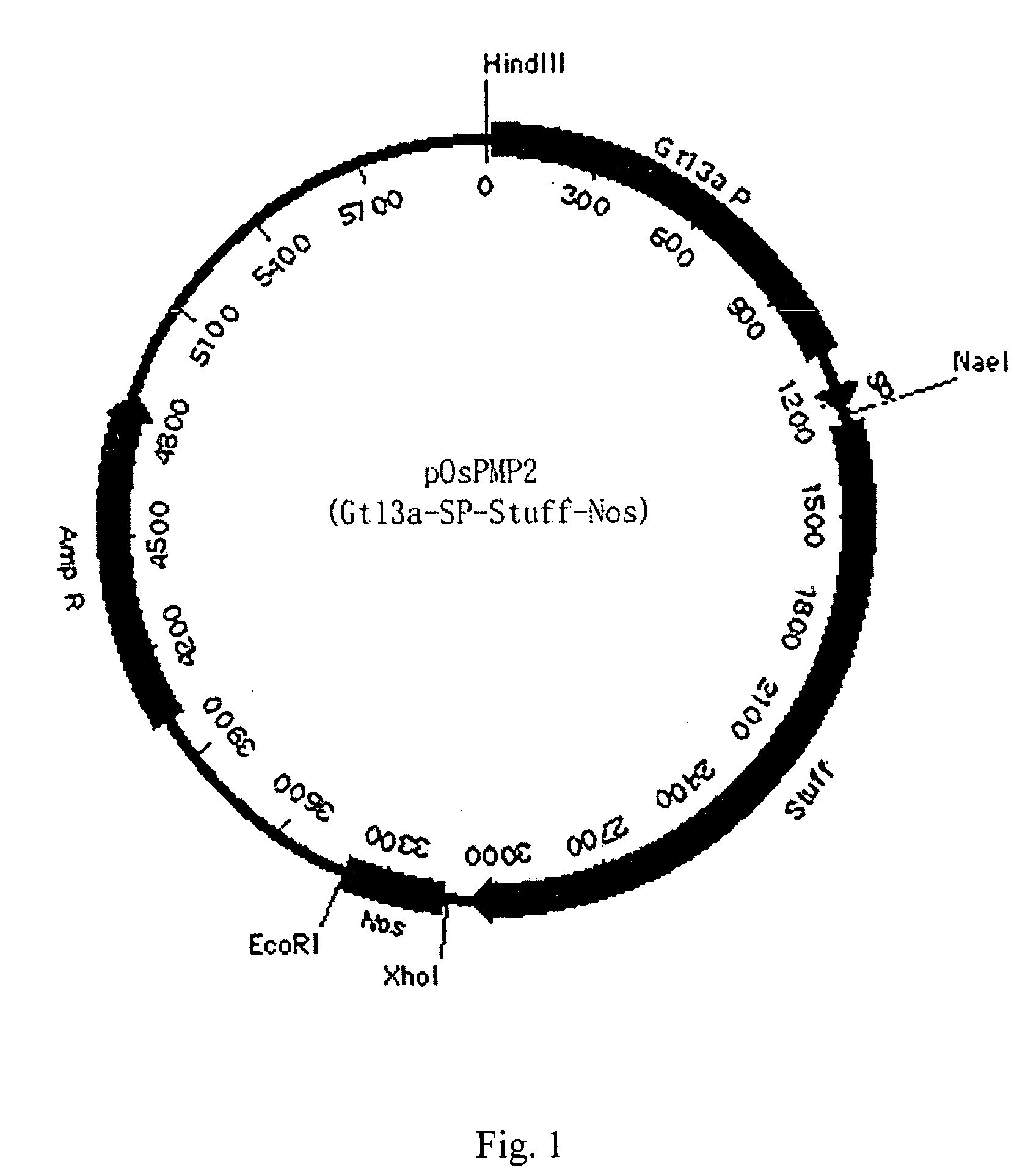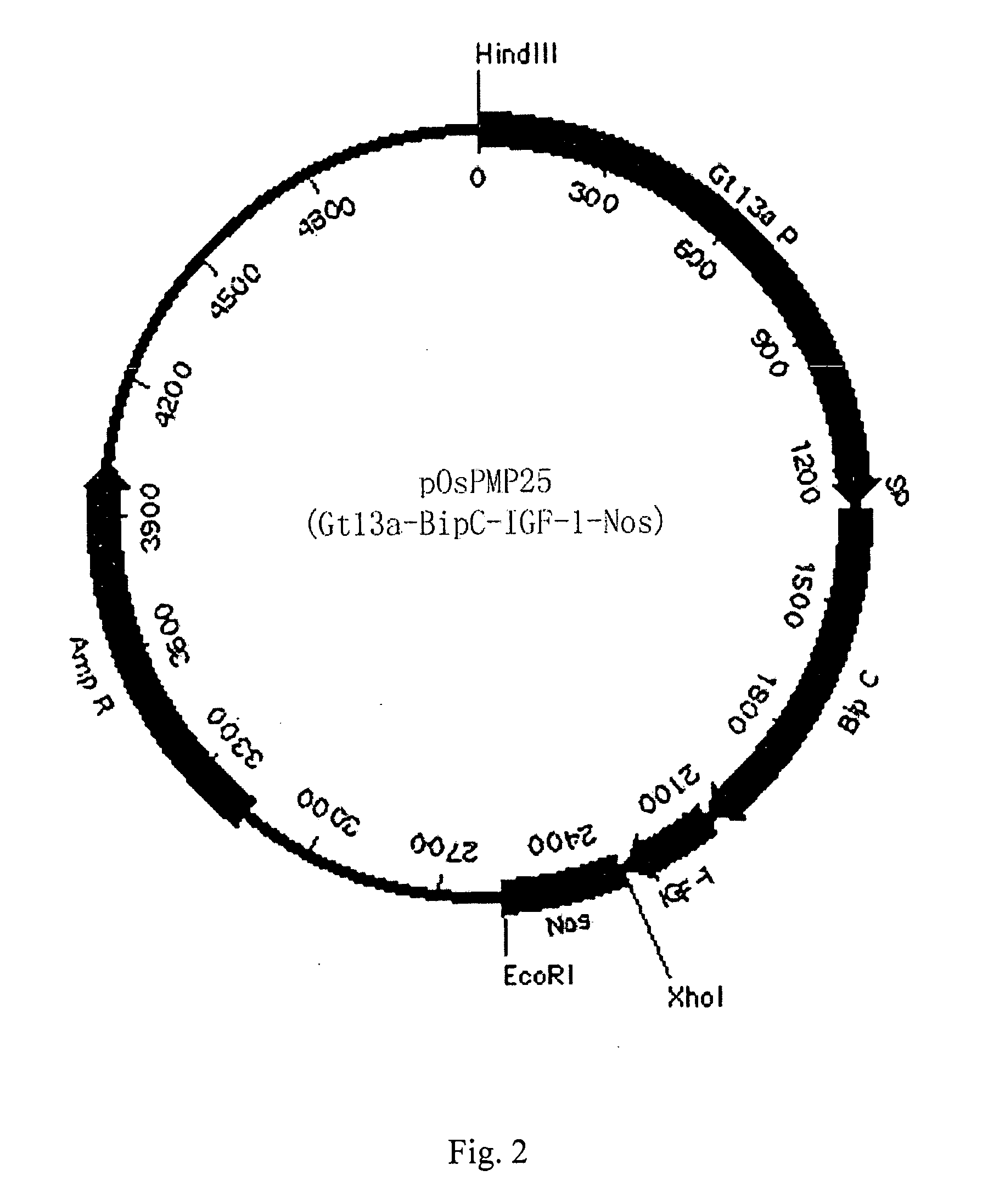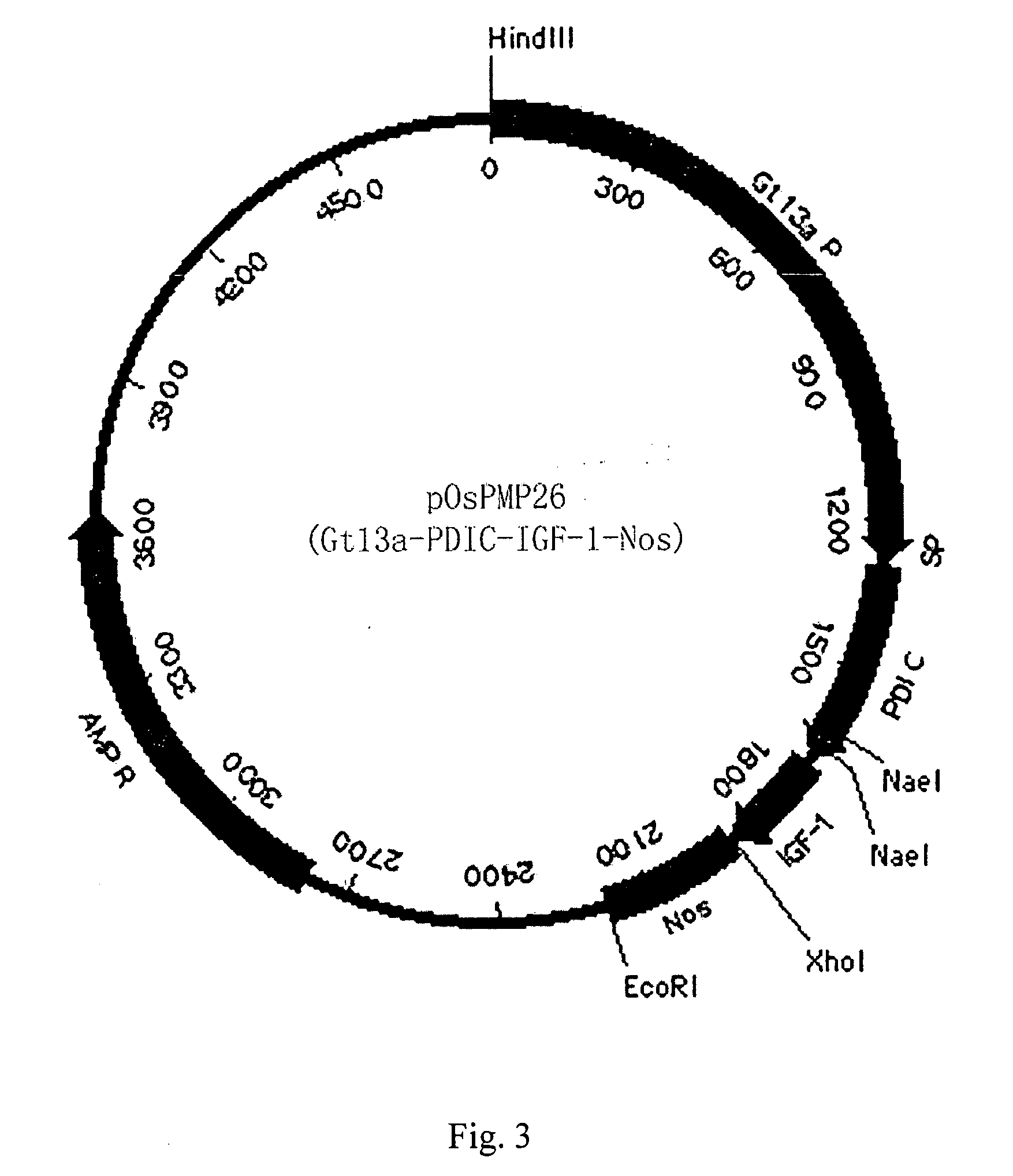Method of expressing small peptides using cereal non-storage proteins as fusion carrier in endosperm and the use thereof
a technology of non-storage protein and peptide, which is applied in the field of gene engineering, can solve the problems of serious limitations in application, serious limitations in the extensive use of yeast, and high cost, and achieves poor bioactivities, poor solubility, and high cost.
- Summary
- Abstract
- Description
- Claims
- Application Information
AI Technical Summary
Benefits of technology
Problems solved by technology
Method used
Image
Examples
example 1
Cloning of Gtl3a Promoter and Signal Peptide
[0057] To clone the promoter and signal peptide sequence of Gtl3a gene (encoding glutelin), the primers of SEQ ID NO: 1 were used to amplify the genomic DNA of Taipei 309 using a standard PCR protocol. A DNA fragment with 1284 bp was obtained. The fragment was digested by NaeI and XhoI, and then cloned to pBI221 to obtain pOsPMP2, a vector specifically expressed in rice endosperm cells (see FIG. 1). The result of DNA analysis indicated the DNA fragment apparently has promoter and signal peptide sequence (SEQ ID NO: 1).
example 2
Chemical Synthesis of Fusion Carrier and Target Gene with Rice Preference Genetic Codons
[0058] The nucleotide sequences of rice Bip gene C-terminal (Genebank accession number: AAB63469), wheat PDI gene C-terminal (Genbank accession number: AJ277377) and insulin-like growth factor gene (Genbank accession number: CAA01955) were obtained from NCBI Databank. Analytic software MacVecter was used to covert the genes into rice preference genetic codes. The changes of optimized DNA sequence and genetic codons are shown in Table 1. It can be seen from Table 1 that all sequences of amino acids remain unchanged. The optimized genes were synthesized by US Blue Heron Biotechnology incorporation. During the synthesis process, MylI and XhoI restriction sites were added to the two ends of each gene. The genes were then cloned into pUC119 (Blue Heron Biotechnology) to produce pOsBipC, pOsPDIC and pOsPMP3, which contains BipC, PDIC and IGF-1 genes with rice preference genetic codons, respectively (S...
example 3
Constructing of Endopserm-Specific Expression Vector of Fusion Protein.
[0059] Optimized human IGF-1 was firstly amplified with PCR, and then cloned into pOsPMP2 digested with MscI and XhoI. The resultant was used to transform E. coli strain DH10B to produce intermediate plasmid pOsPMP3. The plasmid was digested by NaeI and NcoI, while plasmids of pOsPMP2 (See SEQ ID NO: 2), pOsBipC, and pOsPDIC were digested with appropriate restriction enzymes. The gene of the fusion carrier was ligated with pOsPMP2, and the resultant was used to transform E. coli strain DH10B to produce expression plasmids of pOsPMP25 and pOsPMP26. The restriction maps of the plasmids are shown in FIGS. 2 and 3.
PUM
| Property | Measurement | Unit |
|---|---|---|
| time | aaaaa | aaaaa |
| dry weight | aaaaa | aaaaa |
| temperature | aaaaa | aaaaa |
Abstract
Description
Claims
Application Information
 Login to View More
Login to View More - R&D
- Intellectual Property
- Life Sciences
- Materials
- Tech Scout
- Unparalleled Data Quality
- Higher Quality Content
- 60% Fewer Hallucinations
Browse by: Latest US Patents, China's latest patents, Technical Efficacy Thesaurus, Application Domain, Technology Topic, Popular Technical Reports.
© 2025 PatSnap. All rights reserved.Legal|Privacy policy|Modern Slavery Act Transparency Statement|Sitemap|About US| Contact US: help@patsnap.com



